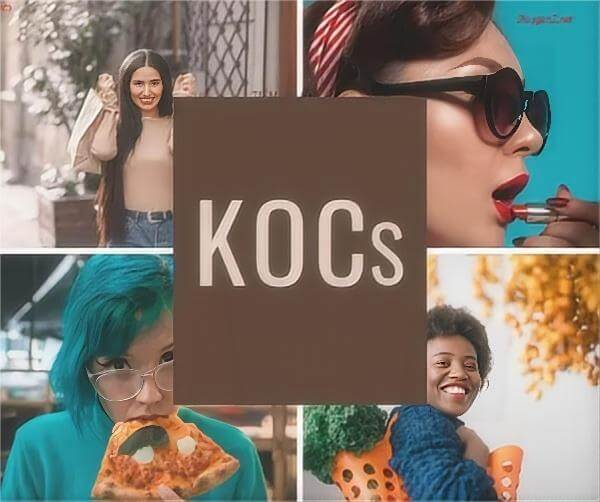With TikTok's explosive growth, marketing strategies on social media have undergone significant changes. While traditional KOLs (Key Opinion Leaders) were once the dominant force in brand promotion, a new role has quietly emerged in recent years: KOCs (Key Opinion Consumers). Unlike big-name influencers, KOCs gain attention and trust through authentic and relatable content, becoming a powerful new force in cross-border e-commerce promotion.

1. The Rise of KOC Marketing: Driven by Authenticity and Trust
On the TikTok platform, KOCs are typically ordinary consumers with small but highly engaged follower bases. Their content is genuine and grounded in real-life experiences, building trust with their audience. Unlike KOLs, KOCs offer recommendations that feel more relatable and authentic, as they also present themselves as regular consumers, making their endorsements more convincing.
1.1 Establishing Authenticity and Trust
The success of KOCs comes from their sincere, unpolished content without excessive commercial packaging. This authenticity earns them higher levels of trust. Many consumers perceive KOCs’ recommendations as more reliable since they are based on personal experience rather than commercial gain, unlike those of large-scale influencers.
1.2 Reaching Niche Markets
Though KOCs may not have large followings, their fans are often highly engaged and interested in specific niches. For instance, a beauty enthusiast KOC may only have a few thousand followers, but those followers are almost entirely beauty product seekers. Compared to broad KOL marketing, KOCs can target their audience more precisely, leading to higher conversion rates.
1.3 Cost-Effective Marketing
KOC marketing is far more affordable than working with large-scale influencers. For small and medium-sized cross-border e-commerce brands, collaborating with multiple KOCs allows them to cover niche markets at lower costs and gradually build a positive reputation. This smaller-scale promotion can rapidly gain traction on TikTok, creating a snowball effect.
2. The Advantages of KOC Marketing
2.1 Strong Community Influence and Word-of-Mouth Impact
KOCs may have smaller fanbases, but their followers are highly loyal and engage actively. This gives KOCs strong influence within their communities, and their genuine product recommendations often spark word-of-mouth effects. In cross-border e-commerce, where consumers rely on real reviews, KOC endorsements can alleviate potential buyers’ concerns, leading to higher conversion rates.
2.2 Evoking User Resonance, Increasing Conversion Rates
KOCs share content closely tied to everyday life, evoking emotional resonance from their audience. They demonstrate how products are used in real life and solve practical problems, enhancing consumers’ identification with the product and driving purchase intent. Especially on TikTok, users are more drawn to “real-life scenarios” rather than overly polished ads.
2.3 Authentic Content Avoids "Ad Fatigue"
KOL marketing often leads to ad fatigue due to its over-commercialization. In contrast, KOCs create more natural, down-to-earth content, often using short videos or personal experiences, steering clear of heavily commercialized production. This genuine content not only avoids alienating audiences but also subtly conveys brand messages through user experiences.
3. The Challenges of KOC Marketing
3.1 Difficulty Maintaining Brand Consistency
KOCs vary widely in style and content, making it challenging for brands to ensure consistency when collaborating with multiple KOCs. While KOCs have strong influence, their personalized content can lead to a mismatch with a brand's image if not managed carefully. Brands need to be cautious when selecting KOC partners to maintain a unified brand tone.
3.2 Risks to Brand Reputation and Regulation
KOCs are not always professional content creators, and their recommendations may lack thorough product knowledge or accurate information. In cross-border e-commerce, where consumers are already wary of foreign products, misleading or exaggerated recommendations from KOCs could damage brand reputation.
3.3 Difficulty in Measuring Results
Unlike KOLs, KOC campaigns are smaller and more dispersed, making it challenging for brands to measure overall campaign effectiveness. Although TikTok provides some data tools, brands still face challenges in aggregating the impact of multiple KOCs and accurately evaluating conversion rates.
4. Future Trends in KOC Marketing
4.1 Data-Driven Precision Collaborations
As AI and big data technology advance, brands will be able to more precisely select KOCs and quantify their impact. By analyzing a KOC’s audience demographics, engagement rates, and content style, brands can develop more targeted marketing strategies. Data-driven precision management will help brands optimize their KOC collaborations and improve campaign results.
4.2 Expansion of KOCs in Niche Markets
As KOCs rise in popularity, more niche market KOCs will gain brand attention. Particularly in cross-border e-commerce, consumers' needs are becoming increasingly diverse. Brands will increasingly rely on KOCs' influence in these specialized fields to quickly build trust and recognition.
4.3 Long-Term Collaborations and Deeper Integration
In the future, brands may seek deeper, long-term partnerships with KOCs, moving beyond short-term product promotions to brand building and long-term collaboration. Brands can co-create content with KOCs and even involve them in product development, enhancing consumer engagement and brand loyalty.
Conclusion
The rise of KOC marketing has introduced a new strategy for cross-border e-commerce brands on TikTok. Through authentic and relatable content, KOCs can earn consumer trust and boost brand conversion rates. However, brands must carefully choose KOC partners and ensure consistency in brand messaging. As data technology evolves, the potential of KOC marketing will continue to grow, becoming a crucial driving force in cross-border e-commerce.


